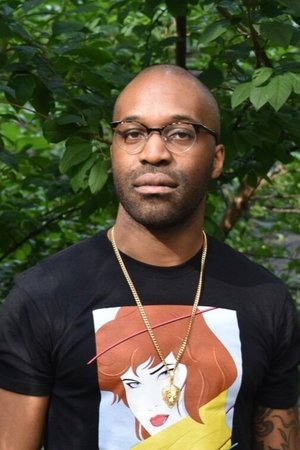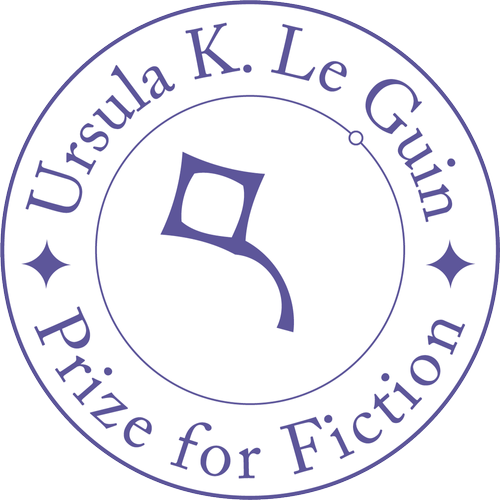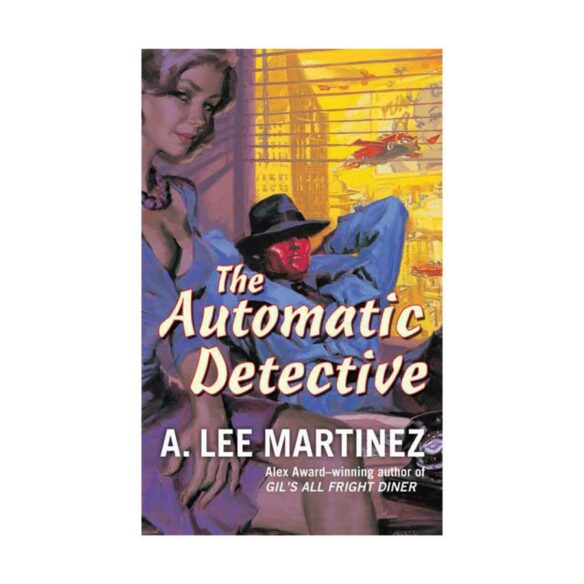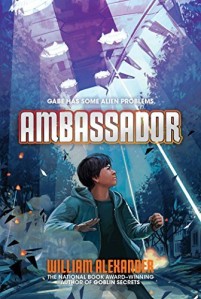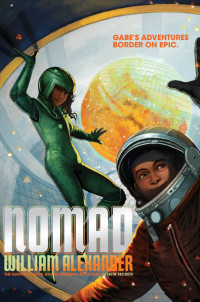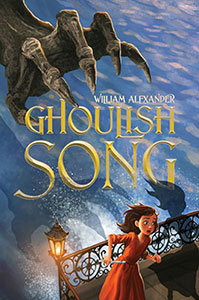(1) NEBULA FINALIST UPDATE. Rebecca Gomez Farrell, SFWA Communications Director, today distributed a corrected Nebula Finalist press release.
SFWA makes every effort to include all appropriate contributors to Nebula Award finalist works before our initial announcement. However, due to the short turnaround time between the certification and the subsequent finalist announcement, we’ve had to make some corrections to our original release. Please see the updated list below for corrections to Journeys through the Radiant Citadel and Vampire: The Masquerade – Sins of the Sires, and additional finalists for Andor: “One Way Out” and Horizon Forbidden West. Please celebrate all of our finalists with us once again.
These updates have been inserted into File 770’s post “SFWA Announces the 58th Nebula Awards Finalists”.
(2) WE INTERRUPT THIS PROGRAM. Here’s one more reason not to believe everything you read. R.L. Stine says he did not participate in changes made to books in his Goosebumps series.
(3) WOMEN’S PRIZE FOR FICTION LONGLIST. The longlist for the 2023 Women’s Prize for Fiction includes three works of genre interest: Glory by NoViolet Bulawayo; Pod by Laline Paull; and Stone Blind by Natalie Haynes. The complete list is at the link.
The judging panel will issue a shortlist of six novels on April 26. The winner of the 2023 Women’s Prize for Fiction will be announced on June 14.
(4) FREE READ FROM FUTURE TENSE. “Intangible Variation” by Meg Charlton is the latest in the monthly series of stories released by Future Tense Fiction about how technology and science will change our lives.
In a response essay, Heather Tal Murphy, a journalist who has covered biomedical technology for Slate and the New York Times, advises readers about “The Trap to Avoid if You Ever Meet a Stranger Who Shares Your DNA”.
(5) FANAC.ORG HITS 20,000 FANZINES. Fanhistory website FANAC.org recently passed a substantial milestone.
FANAC.org now has more than 20,000 fanzines digitally archived on the site. With zines ranging from 1930 to this week, we are continuing to enrich the available catalog of original materials related to science fiction and science fiction fandom. With a number like that, it’s no surprise that we count more than 500 contributors listed at https://fanac.org/FANAC_Inc/fancont.html
Don’t forget – We have added some navigation tools to access our ever-growing archive. The Fanzines drop-down button on FANAC.org allows you to find zines by Title, by Editor, by Date, by Country and more. There’s a special list of newszines if you’re looking for those, and we are building a listing of major APAs. If there are other organizational principles you’d like to see in a nav tool, please let us know at [email protected].
(6) SCANNERS DON’T LIVE IN VAIN. The Fanac.org team will continue to add to its holdings during upcoming visits to Ireland and the UK.
FANAC will have a scanning station at Corflu Craic in Belfast at the end of March, and we hope to have one at Conversation 2023, the Birmingham Eastercon being held the following week. If you are planning to attend either of these, please bring fanzines for us to scan. If you can, write to let us know so we can plan ahead.
Please remember two things: First, to scan each issue, we carefully take each issue apart and then re-staple it. Second, we do not put fanzines online without permission from editors who are still around. Keep that in mind when you bring them. If you can provide contact information for the editor, we’ll try to reach them later. In the meantime, we will keep them archived until the editors can be reached. If you’re not sure, drop a note to [email protected].
Of course, please check the site first to see if the issues are already online. We’re hoping to get some quality Irish/UK/European zines that we haven’t had access to in the past.
(7) THE ULTIMATE WAKE-UP. William Alexander shares “An Alchemist’s Guide to Cuban Coffee” at Sarah Gailey’s Stone Soup. Includes a fine photo of the author with his cat.
Every kind of espresso-maker looks like an anachronistic piece of lab equipment, because that’s exactly what it is. Some of the countertop varieties are steampunkish wonders from alternate versions of the present. Others were sent from the distant future to gather samples and develop new vaccines. The best thing to use for brewing cafecito—also known as Café Cubano, the Elixir of Life, and the Fountain of Youth—is the humble stovetop moka pot created by the engineer, alchemist, and time-traveler Alfonso Bialetti in the distant past (though he didn’t bother to patent his invention until 1933).
Go find yourself a moka pot. You may have to trade for it. Don’t give up your name….
(8) I’M FEELING BETTER. NPR tells “How Barnes & Noble turned a page, expanding for the first time in years”.
The ghost of Barnes & Noble past meets the spirit of Barnes & Noble future in a single shopping center in a suburb of Baltimore.
The new store in Pikesville, Md., separated by half a parking lot from its shuttered predecessor, is part of an unlikely plot twist: Barnes & Noble is staging its largest expansion in over a decade.
After years on the brink of extinction, the book chain is planning to open some 30 new stores this year. Many are returning the retailer to areas it previously abandoned. In a few, Barnes & Noble is even taking over former Amazon bookshops.
The retailer hopes this will turn a new leaf. Barnes & Noble sales have been rising, and last year grew more than 4%, according to Shannon DeVito, director of books.
(9) BUY IT ALL AT ONCE. Did we mention there is an Everything Everywhere All at Once Shop run by A24 films? There really is. For example, this is an item you can buy for a mere $36.
(10) FILMED ON LOCATION AT THE ISS. Russia’s state space corporation Roscosmos has released a trailer for The Challenge, the Russian film shot aboard the International Space Station. Presumably the actual trailer is in the Russian language. The CNN video at the link includes tiny snippets from it: “Video: Trailer for ‘The Challenge,’ the Russian film shot in space, released”
“The Challenge” is the first feature film to send a professional film crew into space and stars Russian actress Yulia Peresild and cosmonaut Oleg Novitskiy.
(11) BERT I. GORDON (1922-2023). A director of genre films known for their “cheesy” special effects, Bert I. Gordon died March 8 from complications after a fall. The Hollywood Reporter recalls his many credits in tough-loving detail. Here’s an excerpt:
Bert I. Gordon, the sci-fi director who aimed to terrify drive-in denizens of the 1950s and ’60s with low-budget films featuring colossal creatures, shrinking humans and radioactive monsters, has died. He was 100. …
…Highlights (lowlights?) on his B-movie résumé include The Cyclops (1957), The Amazing Colossal Man (1957), Beginning of the End (1957), Earth vs. the Spider (1958), Attack of the Puppet People (1958), Tormented (1960), The Boy and the Pirates (1960) and Picture Mommy Dead (1966).
In the ’70s, Gordon directed Vince Edwards and Chuck Connors in The Police Connection (1973) and wrote and directed How to Succeed With Sex (1970), Necromancy (1972), The Food of the Gods (1976) and, starring Joan Collins in the muck, Empire of the Ants (1977)….
Don Ameche, Martha Hyer and Zsa Zsa Gabor manipulated minds in Picture Mommy Dead (Hedy Lamarr had dropped out after a shoplifting arrest); Peter Graves battled giant grasshoppers in Beginning of the End; Basil Rathbone practiced mean wizardry in 1962’s The Magic Sword; and youngsters Beau Bridges and Ron Howard handled mysterious goo in 1965’s Village of the Giants, which featured a performance by The Beau Brummels. …
Mystery Science Theater 3000 revived interest in his work in their own way. Gordon didn’t like that they made fun of it…
(12) ED FURY (1928-2023). Model and actor Ed Fury, especially known for his physique and work in sword-and-sandal epics, died February 24 at the age of 94. Deadline’s recitation of his work onscreen includes —
…At first appearing uncredited (he was the King of Venus in Abbott and Costello Go To Mars, Olympic Team Member in Gentlemen Prefer Blonds, Actor In The Play in The Country Girl and Cowboy in the Saloon in Bus Stop) he landed his first featured and credited role in 1960’s Italian release Colossus and the Amazon Queen, a rare comedic take on the sword-and-sandal genre starring Rod Taylor.
The following year Fury found his signature role as the title character in Ursus, a pseudo-mythological fantasy adventure later released to U.S. television as Ursus, Son of Hercules, though the character had no relation to Hercules. Fury reprised the role in 1961’s Ursus in the Valley of the Lions and, in 1963, Ursus in the Land of Fire….
(13) MEMORY LANE.
2008 – [Compiled by Cat Eldridge.]
This Scroll, we have the Beginning of A. Lee Martinez’s The Automatic Detective which was published by Tor in 2008. Its great story of a war robot that’s not trying to be a private detective on a society that doesn’t really want him to be there at all.
Martinez manages here, much to his credit, to pull off the conceit that this robot is in the keeping of classical detectives like those created by Chandler and Hammett. If you got the proper frame of mind, it really does work.
I thought it would be a neat series but it was a one-off for the author. Oh well.
And now we get introduced to our detective in this Beginning…
The Learned Council had an official name for Empire City.
Technotopia.
Yeah, it wasn’t a real word, but that was kind of the point. The Council loved to reinvent things, improve them, make them new and snazzy. Of course Empire had a lot of unofficial nicknames as well.
Mutantburg. Robotville. The Big Gray Haze. The City That Never Functions. But Technotopia was the official party line, along with the motto “Building Tomorrow’s Town. Today.” I guess it all depended on what you thought the future should look like. If you were looking for a bright and shiny metropolis where all of civilization’s problems had been solved through the wise and fortuitous applications of equal parts science, wisdom, and compassion, then I guess you’d be out of luck. But if your ideal tomorrow was a sprawling, impersonal city with rampant pollution, unchecked mutation, and dangerous and unreliable weird science, then I guess you would be right at home.
Name’s Mack Megaton. I’m a bot. Or automated citizen, as the Learned Council liked to phrase it. There were three classes of robot in Empire. You had your drones: low sophistication models geared toward mundane tasks. Then there were the autos: humanoid models designed for more complex work. Then you had your bots: autos and drones that qualified for citizenship. I hadn’t quite reached bot status yet, but so far my probation had been going smoothly, and I was only forty-six months, six days, four hours, and twenty-two minutes from crossing that objective. I occupied a more vague class between auto and citizen. I couldn’t vote, couldn’t hold public office, and if the Learned Council decided to issue a recall, there wasn’t much I could do about it.
I was barely two years old and weighed a compact seven hundred and sixteen pounds. That’s light when you’re seven feet tall and made entirely of metal. I could punch through concrete and bend steel. I could not, however, tie a bow tie. My programming was state of the art: adaptive, intuitive, evolutionary. I wasn’t programmed knowing how to drive a cab, and I got along just fine doing that. I wasn’t designed to play poker, and I was a decent card sharp, though it’s easier to bluff when you have a featureless faceplate. But my artificial intelligence couldn’t wrap its binary digits around the ins and outs of getting a bow tie on. My hands didn’t help any. They weren’t designed for delicate work, more like sledgehammers with fingers. But the Bluestar Cab Company insisted all its drivers wear bow ties. Real, honest-to-God bow ties. No clip-ons. That’s what got me involved in the mess.
A bot’s got bills to pay. Bill, really. I used to be juiced by a small atomic power core. That was gone now. The Learned Council removed it as part of the terms of my probation. But I still consumed a lot of electricity in a day, and it didn’t come cheap. Not in Empire. There was barely enough to go around in this town. To get my fair share to keep up and running costs plenty. It was fortunate that I didn’t have many other expenses or I’d have never been able to support myself driving a cab. As it was, I usually had to operate at half-power. Used to feel sluggish doing that, but I’d gotten adjusted to it.
(14) TODAY’S BIRTHDAYS.
[Compiled by Cat Eldridge.]
- Born March 8, 1859 — Kenneth Grahame. The Wind in the Willows, of course. Did you know A.A. Milne dramatized it for the stage in 1930? Oh, and he did write one other fantasy, The Reluctant Dragon. (Died 1932.)
- Born March 8, 1921 — Alan Hale Jr. The Skipper on Gilligan’s Island which most likely isn’t genre but he did show up in such films as Captain Kidd and the Slave Girl, The Fifth Musketeer and The Giant Spider Invasion which is most decidedly SF if of a pulpish variety. Series wise, I see he was on The Wild Wild West and Fantasy Island. (Died 1990.)
- Born March 8, 1922 — John Burke. He was active in Fandom in the Thirties, with work in The Fantast, The Futurian and The Satellite. He went pro by the late Thirties in a number of pulp zines. If you read nothing else by him, I recommend his late in life series The Adventures of Dr. Caspian and Bronwen, well-crafted horror. Ash-Tree Press collected much of his superb short fiction in We’ve Been Waiting for You And Other Tales of Unease. (Died 2011.)
- Born March 8, 1931 — Paddi Edwards. She’s here for two very different roles. First is for being the voice of Gozer in the Ghostbusters film. Second is having the lead role of Anya on “The Dauphin” of The Next Generation. The casting agents at Disney liked her so she had the role of Flotsam & Jetsam in The Little Mermaid franchise. (Died 1999.)
- Born March 8, 1932 — Jim Webbert. First active in fandom at the 1950 NorWesCon. He was member of the committee for Seacon, the 1961 Worldcon in Seattle. And he involved in the charmingly named LepreCons. His wife Doreen Webbert is still with us. (Died 2021.)
- Born March 8, 1934 — Kurt Mahr. One of the first writers of the Perry Rhodan series, considered the largest SF series of the world. He also edited a Perry Rhodan magazine, wrote Perry Rhodan chapbooks and yes wrote many, many short stories about Perry Rhodan. He did write several other SF series. Ok what’s the appeal of Perry Rhodan? He runs through SF as a genre but I’ve not read anything concerning him. (Died 1993.)
- Born March 8, 1939 — Peter Nicholls. Writer and editor. Creator and co-editor of The Encyclopedia of Science Fiction with John Clute. His other publications were Science Fiction at Large, The Science in Science Fiction edited by Nicholls and written by him and David Langford, and Fantastic Cinema. He became the first Administrator of the United Kingdom-based Science Fiction Foundation. He was editor of its journal, Foundation: The Review of Science Fiction, from 1974 to 1978. (Died 2018.)
- Born March 8, 1976 — Freddie Prinze Jr., 47. I’m fairly sure his first genre role was in Wing Commander as Lt. Christopher Blair followed by the animated Mass Effect: Paragon Lost in which he voiced Lieutenant James Vega. Speaking of animated endeavors, I’ve got him in Kim Possible: A Sitch In Time voicing Future Jim / Future Tim followed by being in all in all four seasons of the animated Star Wars Rebels as Kanan Jarrus. And that’s a series which I highly recommend as it may well be the best Star Wars fiction ever done.
(15) KUCZKA CENTENARY. [Item by Bence Pintér.] Péter Kuczka, the founder of Galaktika, the principal SF magazine of Hungary in the Communist years, was born 100 years ago. For this anniversary Petőfi Literary Museum posted some never before seen photos of him, e.g. with Brian Aldiss and Harry Harrison. View them here on Facebook.
Péter Kuczka, poet, writer, editor-in-chief of the magazine Galaktika, founder member of Digitális Irodalmi Akadémia (DIA) was born a hundred years ago. He started his writing career in the second half of the 1940s. He wrote his poem cycle Nyírségi Napló in 1953. Between 1953 and ’56, he was a precursor to the revolution. He was banned from publishing after 1956, so his attention turned to science-fantastic literature. From 1969 he edited the Cosmos Fantastic Books series and from 1972 to 1995 he became the editor-in-chief of the Galactics anthology and magazine. He was awarded with numerous awards and awards for his outstanding editorial and organizer work in the field of sci-fi literature….
(16) ALL’S QUIET ON THE STAR WARS FRONT. It’s getting crowded in development hell, although not all of these projects have been lucky enough to return to the underworld: “’Star Wars’: Kevin Feige, Patty Jenkins Movies Shelved” and Variety sorts it all out.
…In December 2020, Lucasfilm chief Kathleen Kennedy announced that “Wonder Woman” helmer Patty Jenkins would direct the next “Star Wars” movie, the one-off adventure “Rogue Squadron.” But in September 2022, Disney pulled the title from its scheduled December 2023 release, and sources with knowledge of the production say it is no longer in active development at the studio. (A rep for Lucasfilm did not respond to a request for comment. In December, Jenkins said in a statement that she was still developing “Rogue Squadron,” but “I don’t know if it will happen or not.”)
Meanwhile, Variety has learned that a possible “Star Wars” feature produced by Marvel Studios chief Kevin Feige is also no longer in active development at Lucasfilm.
…As for Rian Johnson, the in-demand filmmaker has made no secret that he still wants to make the “Star Wars” movies he first announced in 2017 before the release of his film “The Last Jedi,” and Kennedy has been clear that Lucasfilm still wants him, too. But Johnson’s immediate priorities — continuing his Benoit Blanc movies with Daniel Craig for Netflix and Season 2 of hit Peacock series “Poker Face” with Natasha Lyonne — will keep him occupied for the foreseeable future.
So what “Star Wars” movie could slot into that open December 2025 release date? Sources say “Thor: Love and Thunder” filmmaker Taika Waititi continues to work on his possible “Star Wars” feature, and he would most likely have a part in it as well, similar in prominence to his standout role as an imaginary Adolf Hitler in his Oscar-winning 2019 feature “Jojo Rabbit.” And although Lucasfilm has yet to officially confirm it, sources say the studio is committed to a “Star Wars” movie from director Sharmeen Obaid-Chinoy, a two-time Oscar-winning documentarian (“Saving Face,” “A Girl in the River: The Price of Forgiveness”), who made her live-action narrative debut with two episodes of 2022’s “Ms. Marvel” for Disney+. Damon Lindelof (“Watchmen”) and Justin Britt-Gibson (“Counterpart”) were attached in October to write the script for that movie.
Whether one of those films, or some as-yet-unannounced project, lands at the front of the line has been a fiercely guarded secret at Lucasfilm, but sources say the studio will begin to unveil its plans for the future of “Star Wars” cinema at the Star Wars Celebration convention in London the weekend of April 7….
(17) DON’T BELIEVE EVERYTHING YOU READ. A discouraging word from fact-checking site PolitiFact: “Is the moon ‘habitable’ for people? Not with its lack of liquid water or breathable atmosphere”.
It’s not time to move to the moon, no matter how out of this world the idea sounds.
Citing an anonymous source, a social media post suggested the moon could be prime real estate.
“A confidential source claims that the moon is a habitable place and that it is inhabited by more than 250 million humanoid aliens,” read the Feb. 6 Facebook post.
This post was flagged as part of Facebook’s efforts to combat false news and misinformation on its News Feed. (Read more about our partnership with Meta, which owns Facebook and Instagram.)…
(18) ILK OF MAGNESIUM. BBC Future describes “The giant arcs that may dwarf everything in the cosmos”.
In 2021, British PhD student Alexia Lopez was analysing the light coming from distant quasars when she made a startling discovery.
She detected a giant, almost symmetrical arc of galaxies 9.3 billion light years away in the constellation of Boötes the Herdsman. Spanning a massive 3.3 billion light years across, the structure is a whopping 1/15th the radius of the observable Universe. If we could see it from Earth, it would be the size of 35 full moons displayed across the sky.
Known as the Giant Arc, the structure throws into question some of the basic assumptions about the Universe. According to the standard model of cosmology – the theory on which our understanding of the Universe is based – matter should be more-or-less evenly distributed across space. When scientists view the Universe on very large scales there should be no noticeable irregularities; everything should look the same in every direction.
Yet the Giant Arc isn’t the only example of its kind. These gargantuan structures are now forcing scientists to reassess their theory of how the Universe evolved….
(19) FAILURE TO LAUNCH. We’re still looking forward to the launch of the first 3-D printed rocket. It didn’t happen today after all: “Relativity Space scrubs debut launch attempt of world’s 1st 3D-printed rocket after abort” reports Space.com.
The space startup Relativity Space called off the first-ever flight of its new 3D-printed rocket on Wednesday (March 8) after a last-minute abort and temperature issues during the countdown.
Relativity Space’s Terran 1 launch vehicle, billed as the world’s first 3D-printed rocket, experienced an automatic abort about 70 seconds before an initial launch try at 2:40 p.m. EST (1940 GMT) at its Florida launch pad at the Cape Canaveral Space Force Station. While the company tried to reset for a second launch attempt on Wednesday, it ultimately had to stand down “due to exceeding launch commit criteria limits” for the fuel temperatures on the rocket’s second stage, officials wrote in a Twitter update(opens in new tab)….
(20) A TIME WHOSE IDEA HAS COME. The New York Times thinks “The Moon May Get Its Own Time Zone”. Those sun dials aren’t cutting it.
What time is it on the moon?
Since the dawn of the space age, the answer has been: It depends. For decades, lunar missions have operated on the time of the country that launched them. But with several lunar explorations heading for the launchpad, the European Space Agency has deemed the current system unsustainable.
The solution, the agency said last week, is a lunar time zone.
“ESA is not taking the lead on this discussion, we’re just putting a finger on a problem we need to tackle,” said Brice Dellandrea, an engineer with the ESA. “But this is the kind of topic that needs international coordination and consensus.”
The main objective of establishing a universal timekeeping system for the moon, the ESA said, is to streamline contact among the various countries and entities, public and private, that are coordinating trips to and around the moon….
[Thanks to John King Tarpinian, Chris Barkley, Bence Pintér, SF Concatenation’s Jonathan Cowie, Jeffrey Smith, Joey Eschrich, Andrew Porter, Michael Toman, Cat Eldridge, and Mike Kennedy for some of these stories. Title credit belongs to File 770 contributing editor of the day Soon Lee.]



